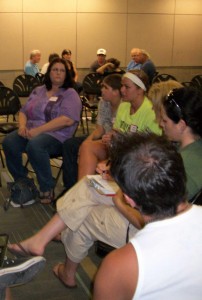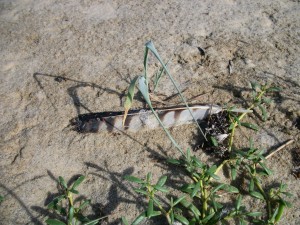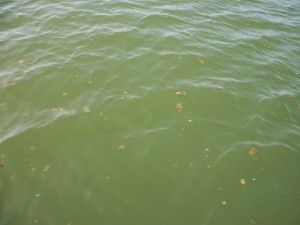In my previous post, I showed pictures of LOTS OF OIL just off the Dauphin Island beaches (two of those pictures are included below). At that same time, I collected two samples of the oil and provided them to scientists. But before I gave them the samples some very strange things happened. The first sample included several clogs of oil and about a cup of seawater from an area of surface oil like the picture on the left. The second sample was gathered from an area of dense surface oil like the picture on the right. The oil collected in the second sample was very liquidy and contained very little seawater. I collected the samples around 5:45 P.M., August 4 (yesterday). By noon of the following day (today), dramatic changes had taken place in both samples. By noon, the water with the clogs of oil had turned clear, and the clogs of oil had either dissolved or evaporated and were no longer visible. By noon, there were just a few black granules at the bottom of the jar. In another strange development, also by noon, the oil in the second container had lost over half its volume (the glass jar which was filled to the brim was mostly empty). Both jars were closed with lids.
Larger original photographs used in this and the previous post:












